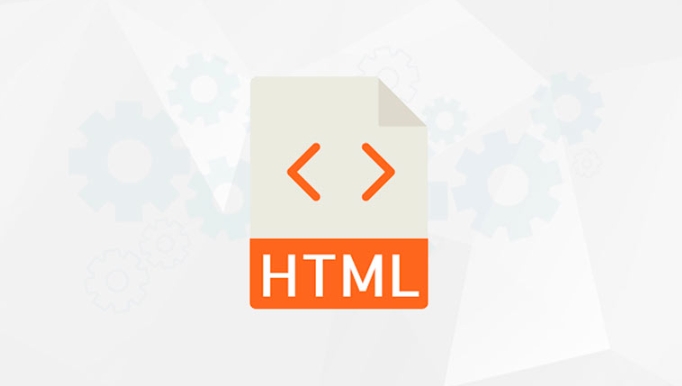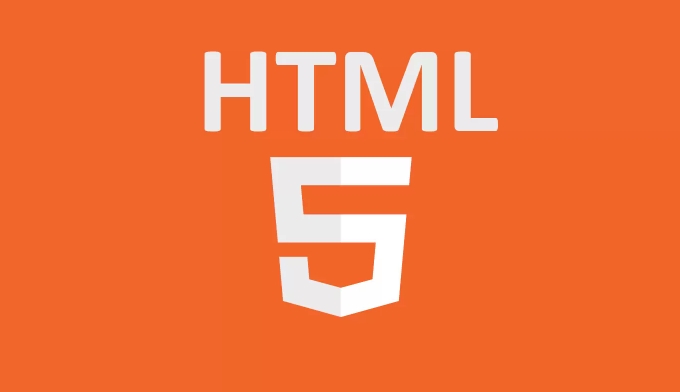charset="UTF-8" ensures that the browser correctly parses web characters, 1. Prevent special characters from appearing as garbled, such as é or world becomes ?? or? ? ; 2. Support global languages, covering almost all writing systems such as Chinese, Arabic, emoji, etc.; 3. Improve compatibility and SEO, which helps search engine indexing, consistent rendering across browsers and avoids encoding errors; <meta charset="UTF-8"> should be placed at the beginning of HTML documents
to ensure quick recognition. Although HTML5 uses UTF-8 by default, explicit declarations can ensure the correct handling of old systems and edge cases, which is of great significance to global content display.
The charset="UTF-8" attribute tells the browser how to interpret the characters in an HTML document. Specifically, it sets the character encoding to UTF-8 , which is a widely used encoding standard capable of representing almost all characters from all human languages — including English, Chinese, Arabic, emojis, and special symbols.

Here's what it actually does:
1. Prevents Garbled Text
Without a proper charset, browsers might misinterpret special characters (like é, £, or world), turning them into gibberish like or ??. Setting charset="UTF-8" ensures that text displays correctly across different devices and languages.

2. Enables Global Language Support
UTF-8 can encode over a million characters from various writing systems. This makes your webpage accessible and readable for users worldwide, no matter what language they use.
3. Improves Compatibility and SEO
Search engines and modern web standards expect UTF-8. Using it helps with:

- Better indexing of content
- Consistent rendering across browsers
- Avoiding encoding-related bugs
Where and How to Use It
You should include the charset declaration early in the of your HTML document:
<meta charset="UTF-8">
It's best practice to place this as early as possible because:
- Browsers start parsing text immediately
- Delaying the charset hint can cause rendering issues or text re-parsing
? Note: UTF-8 is now the default in HTML5, but explicitly declaring it ensures older systems or edge cases handle it correctly.
Summary
-
charset="UTF-8"ensures text is interpreted correctly - Prevents garbled characters
- Supports all major languages and symbols
- Should be set early in the HTML
Basically, it's a small tag with a big impact on how your content is seen around the world.
The above is the detailed content of What does charset='UTF-8' do?. For more information, please follow other related articles on the PHP Chinese website!

Hot AI Tools

Undress AI Tool
Undress images for free

Undresser.AI Undress
AI-powered app for creating realistic nude photos

AI Clothes Remover
Online AI tool for removing clothes from photos.

Clothoff.io
AI clothes remover

Video Face Swap
Swap faces in any video effortlessly with our completely free AI face swap tool!

Hot Article

Hot Tools

Notepad++7.3.1
Easy-to-use and free code editor

SublimeText3 Chinese version
Chinese version, very easy to use

Zend Studio 13.0.1
Powerful PHP integrated development environment

Dreamweaver CS6
Visual web development tools

SublimeText3 Mac version
God-level code editing software (SublimeText3)
 How to solve the problem of garbled characters in tomcat logs?
Dec 28, 2023 pm 01:50 PM
How to solve the problem of garbled characters in tomcat logs?
Dec 28, 2023 pm 01:50 PM
What are the methods to solve the problem of garbled tomcat logs? Tomcat is a popular open source JavaServlet container that is widely used to support the deployment and running of JavaWeb applications. However, sometimes garbled characters appear when using Tomcat to record logs, which causes a lot of trouble to developers. This article will introduce several methods to solve the problem of garbled Tomcat logs. Adjust Tomcat's character encoding settings. Tomcat uses ISO-8859-1 character encoding by default.
 Effective method to solve the problem of garbled characters in the eclipse editor
Jan 04, 2024 pm 06:56 PM
Effective method to solve the problem of garbled characters in the eclipse editor
Jan 04, 2024 pm 06:56 PM
An effective method to solve the garbled problem of eclipse requires specific code examples. In recent years, with the rapid development of software development, eclipse, as one of the most popular integrated development environments, has provided convenience and efficiency to many developers. However, you may encounter garbled code problems when using eclipse, which brings trouble to project development and code reading. This article will introduce some effective methods to solve the problem of garbled characters in Eclipse and provide specific code examples. Modify eclipse file encoding settings: in eclip
 How to solve the character encoding problem in Go language
Jun 30, 2023 am 09:21 AM
How to solve the character encoding problem in Go language
Jun 30, 2023 am 09:21 AM
Methods to solve character encoding problems in Go language development In the process of Go language development, character encoding problems are often encountered. Especially when dealing with data input, output, storage and transmission, it is very important to correctly handle character encoding. This article will introduce some methods to solve character encoding problems in Go language development. First, before dealing with the character encoding issue, we need to understand the character encoding standard of the Go language. The Go language uses the Unicode character encoding standard, which is a globally accepted character encoding standard that supports almost
 How to handle character encoding conversion exceptions in Java development
Jul 01, 2023 pm 05:10 PM
How to handle character encoding conversion exceptions in Java development
Jul 01, 2023 pm 05:10 PM
How to deal with character encoding conversion exceptions in Java development In Java development, character encoding conversion is a common problem. When we process files, network transmissions, databases, etc., different systems or platforms may use different character encoding methods, causing abnormalities in character parsing and conversion. This article will introduce some common causes and solutions of character encoding conversion exceptions. 1. The basic concept of character encoding. Character encoding is the rules and methods used to convert characters into binary data. Common character encoding methods include AS
 PHP returns the ASCII value of the first character of the string
Mar 21, 2024 am 11:01 AM
PHP returns the ASCII value of the first character of the string
Mar 21, 2024 am 11:01 AM
This article will explain in detail the ASCII value of the first character of the string returned by PHP. The editor thinks it is very practical, so I share it with you as a reference. I hope you can gain something after reading this article. PHP returns the ASCII value of the first character of a string Introduction In PHP, getting the ASCII value of the first character of a string is a common operation that involves basic knowledge of string processing and character encoding. ASCII values ??are used to represent the numeric value of characters in computer systems and are critical for character comparison, data transmission and storage. The process of getting the ASCII value of the first character of a string involves the following steps: Get String: Determine the string for which you want to get the ASCII value. It can be a variable or a string constant
 What is the most commonly used character encoding in computers?
Apr 23, 2020 pm 04:52 PM
What is the most commonly used character encoding in computers?
Apr 23, 2020 pm 04:52 PM
The most commonly used character encoding in computers is ASCII code. ASCII is a computer coding system based on the Latin alphabet. It is the most common information exchange standard and is equivalent to the international standard ISO/IEC646.
 How to Correctly Handle Chinese Encoding: A Practical Guide to the Go Language
Mar 28, 2024 pm 12:48 PM
How to Correctly Handle Chinese Encoding: A Practical Guide to the Go Language
Mar 28, 2024 pm 12:48 PM
How to Correctly Handle Chinese Encoding: A Practical Guide to Go Language With the rapid development of the Internet and computer technology, Chinese encoding has become a problem that cannot be ignored. As a powerful programming language, Go language has certain convenience and flexibility in processing Chinese coding. Correctly handling Chinese encoding is crucial for developers. Today we will discuss how to correctly handle Chinese encoding in the Go language and give some specific code examples. Use UTF-8 encoding When processing Chinese encoding, Go language recommends using UTF
 Effective techniques to solve garbled display in Linux terminals
Mar 20, 2024 pm 09:54 PM
Effective techniques to solve garbled display in Linux terminals
Mar 20, 2024 pm 09:54 PM
Effective techniques to solve the problem of garbled characters displayed on the Linux terminal. In the process of daily use of the Linux system, we may encounter the situation where the terminal displays garbled characters, which not only affects our work efficiency, but also brings us trouble. This article will introduce some effective techniques to solve the problem of garbled display in Linux terminals, and give specific code examples, hoping to help readers solve this problem. Modify the terminal character encoding: Enter the following command in the terminal to modify the terminal character encoding to UTF-8, which is the currently widely used character encoding.






